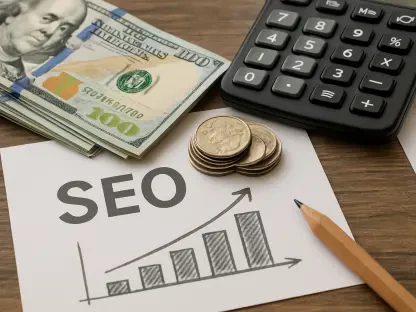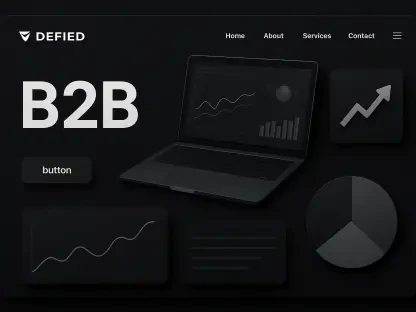Digital marketing is rapidly evolving, and by 2025, it is expected to offer even more significant advantages for businesses. This article explores the key benefits and trends that will shape the future of digital marketing, providing insights into how businesses can leverage these developments for growth.
Expansive Reach and Global Connectivity
Breaking Geographical Barriers
One of the most compelling benefits of digital marketing lies in its ability to transcend geographical limitations. By 2025, businesses will be able to connect with a global audience more efficiently and cost-effectively than ever before. Traditional marketing methods often required significant resources and investments to reach international markets, but digital platforms have drastically reduced these barriers. Through social media, email marketing, and search engine visibility, companies can now establish their presence in multiple countries without the need for physical expansion. This global reach not only allows businesses to grow their market presence but also provides them with the opportunity to tap into new customer bases.
Moreover, digital marketing’s ability to achieve a global presence does not come at the expense of specificity. Businesses can craft tailored messages to resonate with diverse cultural contexts and regional preferences, thereby enhancing the effectiveness of their campaigns. Emerging technologies, such as AI-driven localization tools, will further streamline this process, reducing the complexity of managing international marketing efforts. This level of precision combined with expansive reach ensures that businesses can maximize their impact while keeping costs manageable. As a result, digital marketing will continue to be an invaluable tool for businesses looking to scale their operations and reach new heights by 2025.
Enhancing Local Visibility
While the ability to reach a global audience is a significant advantage, digital marketing also provides substantial benefits for local businesses. Localized SEO strategies and targeted digital advertisements enable businesses to enhance their visibility within their immediate vicinity. By incorporating location-based keywords and optimizing their online presence, local businesses can attract nearby customers who are actively searching for their products or services. This targeted approach ensures that marketing efforts are focused on potential customers who are more likely to convert, thereby maximizing the return on investment.
In addition to SEO strategies, local businesses can leverage digital advertisements that are specifically designed to reach audiences within a certain geographic area. Platforms like Google Ads and social media networks offer targeting options that allow businesses to narrow down their audience based on location, demographics, and online behavior. This dual potential of digital marketing ensures that businesses can effectively cater to both local and international markets. By 2025, advancements in geo-targeting and personalized marketing will further enhance the ability of local businesses to connect with their communities, build brand loyalty, and drive foot traffic to their physical locations.
Cost-Effectiveness and Budget Optimization
Efficient financial management is crucial for businesses aiming to maximize profitability and growth. By implementing strategic cost-effectiveness measures and optimizing their budgets, companies can enhance their operational efficiencies and ensure sustainable long-term success.
Affordable Marketing Solutions
One of the primary advantages of digital marketing is its cost-effectiveness, which allows businesses of all sizes to compete on a more level playing field. By 2025, even small businesses will be able to compete with larger enterprises by leveraging affordable and highly targeted digital marketing strategies. Traditional marketing methods, such as print advertising, television commercials, and billboards, often require substantial financial investments that can be prohibitive for smaller businesses. In contrast, digital marketing offers a range of budget-friendly options that deliver significant returns.
Digital marketing platforms provide businesses with the flexibility to allocate their marketing budgets more efficiently. Pay-per-click advertising, for instance, ensures that businesses only pay when a user interacts with their ad, making it a cost-effective way to drive traffic and generate leads. Social media marketing allows businesses to reach a large audience at a fraction of the cost of traditional media. Furthermore, email marketing campaigns can be executed with minimal expenses while delivering personalized messages directly to the target audience. The democratization of marketing enables businesses to allocate their budgets more strategically, focusing on tactics that deliver the best results for their specific goals.
Maximizing ROI
Digital marketing’s potential to improve return on investment (ROI) is another critical benefit. Through higher conversion rates and targeted efforts, businesses can achieve better results with less expenditure. Unlike traditional marketing methods, digital campaigns can be precisely measured and optimized in real-time. This data-driven approach allows businesses to identify which strategies are working and make necessary adjustments to enhance performance. Real-time analytics and performance tracking further enhance the ability to optimize campaigns and maximize ROI.
By 2025, advancements in analytics tools and technologies will provide businesses with even more granular insights into their marketing efforts. Predictive analytics, machine learning algorithms, and AI-driven data analysis will enable businesses to forecast trends, identify patterns, and make informed decisions about their marketing strategies. This continuous improvement process ensures that marketing efforts are always aligned with business goals, driving better results and higher ROI. As businesses become more proficient in leveraging these tools, they will be able to fine-tune their campaigns with greater precision, ultimately achieving a higher return on their marketing investments.
Advanced Targeting and Personalization
Identifying Ideal Consumers
Advanced targeting capabilities provided by digital marketing allow businesses to identify and reach their ideal consumers based on specific attributes and behaviors. By 2025, these capabilities will become even more sophisticated, enabling businesses to create highly personalized marketing campaigns that resonate with their target audience. Digital marketing platforms offer a wealth of data that businesses can use to segment their audience and tailor their messages. Demographics, psychographics, online behavior, and purchase history are just a few of the factors that businesses can leverage to create targeted campaigns.
The rise of artificial intelligence and machine learning in digital marketing will further enhance the precision of audience targeting. These technologies can analyze vast amounts of data to uncover insights and predict future behavior, allowing businesses to focus their efforts on the most promising leads. By identifying and targeting ideal consumers, businesses can increase the relevance of their marketing messages, resulting in higher engagement and conversion rates. This level of granularity in targeting will enable businesses to build deeper connections with their audience and foster long-term customer relationships.
Enhancing Customer Experience
Personalization is key to enhancing customer experience in digital marketing. By tailoring their interactions with customers, businesses can provide personalized content and offers that meet individual needs and preferences. This focus on personalization helps businesses build stronger relationships with their customers and foster loyalty. Personalized marketing goes beyond addressing customers by their names; it involves understanding their preferences, anticipating their needs, and delivering relevant content at the right time.
Digital marketing platforms offer numerous tools and techniques for personalizing customer interactions. Email marketing automation allows businesses to send targeted messages based on customer behavior, such as past purchases or browsing history. Personalized product recommendations on e-commerce websites enhance the shopping experience by showcasing items that customers are likely to be interested in. Social media platforms enable businesses to engage with customers in real-time, responding to their queries and providing tailored support. By 2025, advancements in AI and machine learning will further enhance the ability to deliver personalized experiences, creating a more seamless and enjoyable customer journey.
Diverse Content and Engagement Strategies
Variety of Content Formats
The diversity of content types available in digital marketing ensures that brands remain dynamic and appealing online. By 2025, businesses will be able to leverage a wide range of content formats, including blogs, podcasts, infographics, and social media posts, to engage their audience effectively. Each content format serves a unique purpose and appeals to different segments of the audience. Blogs, for instance, provide valuable information and establish thought leadership, while podcasts offer an engaging way to share insights and stories.
Visual content, such as infographics and videos, captures attention and conveys complex information in an easily digestible format. Social media posts allow businesses to connect with their audience on a more personal level, fostering a sense of community and engagement. The key to effective content marketing is to understand the preferences and behaviors of the target audience and create content that resonates with them. By leveraging a variety of content formats, businesses can keep their audience engaged, drive traffic to their website, and build brand awareness.
Interactive and Engaging Platforms
Digital marketing is inherently designed to be engaging, and interactive platforms and tools will enable businesses to create more immersive experiences for their customers. By 2025, businesses will have access to advanced technologies that facilitate interactive content, such as augmented reality (AR) and virtual reality (VR). These technologies provide unique opportunities for businesses to engage with their audience in innovative ways, creating memorable experiences that drive brand loyalty.
Interactive content, such as quizzes, polls, and interactive videos, encourages active participation from the audience, making the marketing experience more engaging and enjoyable. Social media platforms offer numerous features that facilitate interaction, such as live streaming, stories, and chat functions. These tools allow businesses to connect with their audience in real-time, fostering a sense of community and building stronger relationships. By leveraging interactive and engaging platforms, businesses can create compelling experiences that captivate their audience and drive long-term growth.
Real-Time Analytics and Optimization
Monitoring Performance
Monitoring performance is crucial for any organization aiming to maintain high standards and achieve its goals. By continuously assessing various aspects of their operations, companies can identify areas for improvement and implement strategies to enhance efficiency and effectiveness. This process involves tracking key performance indicators (KPIs), analyzing data trends, and setting benchmarks to measure success. Regular performance reviews help ensure that employees stay aligned with the organization’s objectives and contribute to its overall growth.
Real-time web analytics are crucial for monitoring and optimizing digital marketing efforts. By 2025, businesses will have access to even more advanced analytics tools that provide detailed insights into campaign performance. These tools enable businesses to track key performance indicators (KPIs), such as website traffic, conversion rates, and engagement metrics, in real-time. This data-driven approach allows businesses to identify trends, measure the effectiveness of their campaigns, and make informed decisions about their marketing strategies.
The ability to monitor performance in real-time also provides businesses with the agility to respond quickly to changing market conditions and customer behavior. If a campaign is not performing as expected, businesses can make immediate adjustments to improve results. This continuous feedback loop ensures that marketing efforts are always optimized for maximum impact. By leveraging real-time analytics, businesses can stay ahead of the competition and achieve their marketing goals more efficiently.
Continuous Improvement
The ability to continuously monitor and optimize digital marketing campaigns is a significant advantage. Businesses can use real-time data to identify what works and what doesn’t, making necessary adjustments to improve performance. This iterative process ensures that marketing efforts are always aligned with business goals. By testing different strategies and analyzing the results, businesses can refine their approach and enhance the effectiveness of their campaigns.
A/B testing is a valuable technique for optimizing digital marketing efforts. By comparing two versions of a campaign element, such as a headline or call-to-action, businesses can determine which version performs better and implement the winning strategy. This data-driven approach to marketing allows businesses to make informed decisions and achieve better results over time. By 2025, advancements in analytics and optimization tools will further enhance the ability to continuously improve marketing efforts, driving better outcomes and higher return on investment.
Increased ROI and Business Growth
Achieving increased ROI is essential for driving business growth and maintaining a competitive edge in today’s market. By implementing strategic planning and effectively managing resources, businesses can optimize their operations and enhance profitability. Fostering innovation, improving customer satisfaction, and investing in employee development can also contribute significantly to sustainable growth and long-term success.
Driving Conversions
Digital marketing’s ability to drive conversions is vital for business growth. By 2025, businesses will be able to leverage advanced targeting and personalization techniques to achieve higher conversion rates. By delivering relevant content and offers to the right audience at the right time, businesses can increase the likelihood of converting leads into customers. This focus on driving conversions will help businesses achieve their growth objectives more efficiently.
Conversion rate optimization (CRO) is a critical component of digital marketing. By analyzing user behavior and testing different elements of the customer journey, businesses can identify barriers to conversion and make necessary improvements. Personalization, seamless navigation, and compelling calls-to-action are just a few of the factors that contribute to higher conversion rates. By continuously optimizing their digital marketing efforts, businesses can drive more conversions, generate higher revenue, and achieve sustainable growth.
Fixed version:
Expanding Customer Base
Digital marketing enables businesses to expand their customer base significantly by reaching both local and global clients. This expansion is crucial for long-term business growth and success. Digital marketing platforms offer a range of tools and techniques for reaching new audiences, such as social media advertising, search engine marketing, and content marketing.
Social media platforms, in particular, provide businesses with the opportunity to reach a vast and diverse audience. By creating engaging content and leveraging social media advertising, businesses can attract new followers and convert them into customers. Influencer marketing is another effective strategy for expanding the customer base. By partnering with influencers who have a large and engaged following, businesses can reach new audiences and build brand awareness. By 2025, advancements in digital marketing technologies and techniques will further enhance the ability to expand the customer base, driving long-term growth and success.
Improved Customer Interaction and Support
Real-Time Communication
Real-time communication refers to the exchange of information instantly or with negligible latency. This type of communication is essential in various fields such as customer service, healthcare, and collaborative work environments. Technologies that facilitate real-time communication include instant messaging, video conferencing, and VoIP (Voice over Internet Protocol). The immediacy of real-time communication enhances efficiency, productivity, and the overall user experience, making it an integral component of modern communication systems.
Digital marketing facilitates real-time communication with customers, enabling businesses to provide timely support and address customer queries promptly. By 2025, businesses will be able to leverage advanced communication tools, such as chatbots and AI-driven customer support, to enhance customer interaction. Real-time communication is critical for building trust and fostering positive relationships with customers. When customers receive timely and relevant responses to their inquiries, they are more likely to have a positive experience with the brand.
Chatbots and AI-driven customer support tools are becoming increasingly sophisticated, offering businesses the ability to provide instant responses to common queries and personalized assistance. These tools can handle a wide range of customer interactions, from answering frequently asked questions to providing product recommendations and processing orders. By leveraging real-time communication tools, businesses can ensure that their customers receive the support they need, enhancing the overall customer experience and building loyalty.
Building Customer Loyalty
Effective customer interaction is key to building loyalty. By providing personalized and timely support, businesses can foster deeper relationships with their customers. This focus on customer interaction will help businesses build a loyal customer base and drive long-term growth. Personalized communication, whether through email marketing, social media engagement, or customer support, shows customers that the business values their needs and preferences.
Loyal customers are more likely to make repeat purchases and recommend the brand to others, driving word-of-mouth marketing and increasing the customer base. By 2025, advancements in digital marketing technologies will enable businesses to deliver even more personalized and timely interactions, further enhancing customer loyalty. Customer relationship management (CRM) systems, for instance, allow businesses to track customer interactions and preferences, enabling them to provide tailored experiences. By focusing on building strong customer relationships, businesses can create a loyal customer base that drives long-term growth and success.
Flexibility and Adaptability
Adapting to Changing Trends
The digital marketing landscape is constantly evolving, and businesses need to be flexible and adaptable to stay ahead. By 2025, businesses will need to stay abreast of the latest trends and technologies to remain competitive. This adaptability will be crucial for long-term success. The rapid pace of technological advancements requires businesses to be agile and responsive to changes in consumer behavior, market dynamics, and industry trends.
Staying informed about emerging trends, such as voice search, video marketing, and influencer partnerships, will allow businesses to leverage new opportunities and stay relevant. Additionally, businesses must be prepared to experiment with new strategies and platforms, evaluating their effectiveness and making necessary adjustments. This proactive approach to digital marketing ensures that businesses can navigate the ever-changing landscape and maintain a competitive edge.
Leveraging New Technologies
Digital marketing is rapidly transforming, and by 2025, it is predicted to bring even more significant benefits for businesses. This transformation is crucial for companies aiming to stay competitive and drive growth. The article dives into the major advantages and trends expected to define the future landscape of digital marketing. Businesses can gain valuable insights into effectively using these emerging developments to their advantage.
One notable trend in future digital marketing will involve a more integrated use of artificial intelligence (AI). AI can analyze consumer behavior patterns to deliver highly personalized marketing messages. Consequently, businesses can better target their audiences and improve their marketing efficiency.
Additionally, the rise of video content as a dominant form of communication cannot be overlooked. Interactive video campaigns and live streaming will become even more essential for engaging consumers. Social media platforms are also expected to evolve further, offering new opportunities for businesses to connect with their audiences.
Furthermore, data privacy will remain a critical issue. Businesses will need to be vigilant about complying with regulations like the General Data Protection Regulation (GDPR) and other privacy laws to maintain consumer trust.
Overall, digital marketing by 2025 promises to be more sophisticated, data-driven, and consumer-focused. Businesses that adapt to these trends can expect significant growth and stronger customer relations. By staying informed and agile, companies can leverage these advancements to stay ahead in an increasingly digital world.









